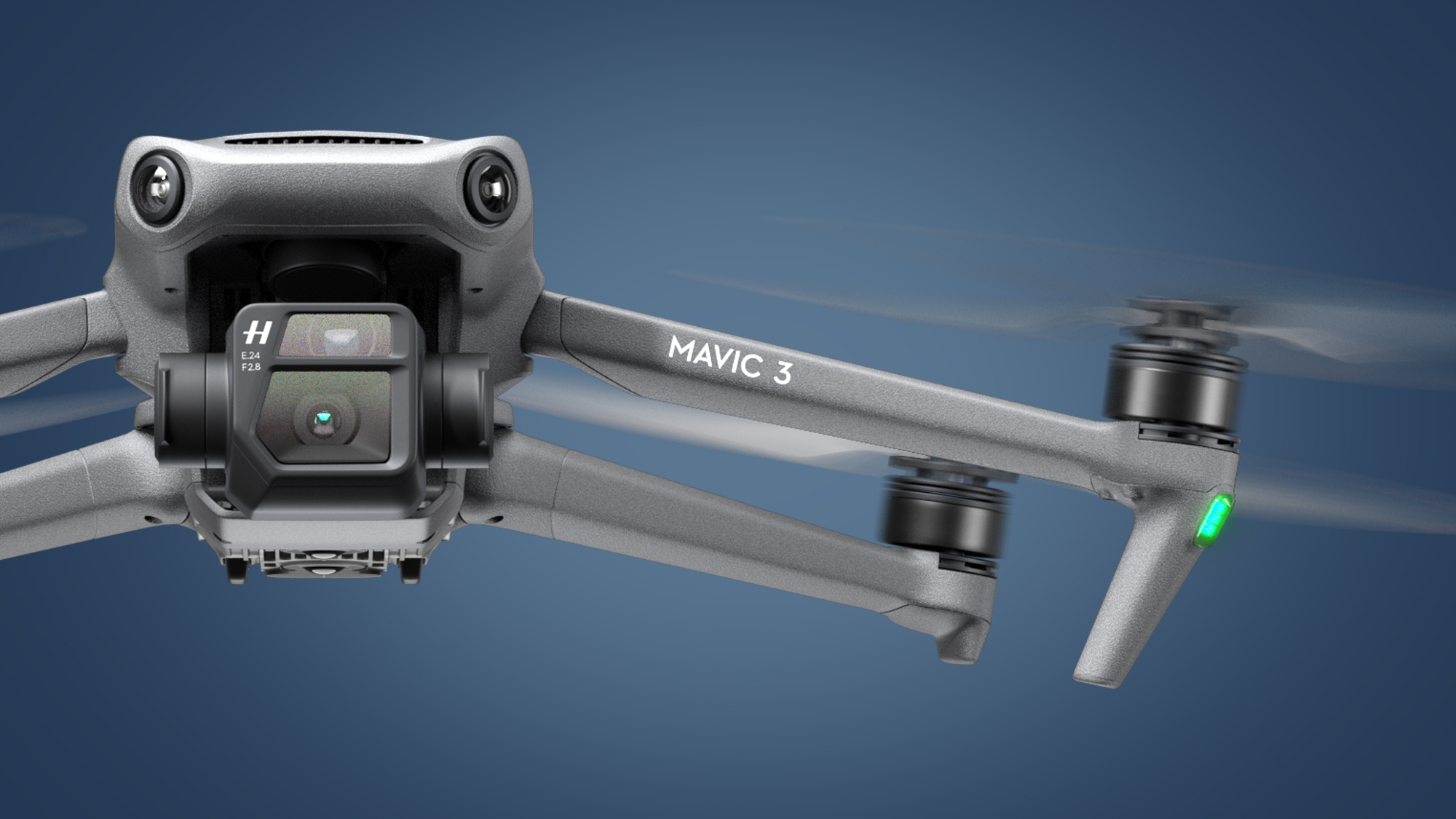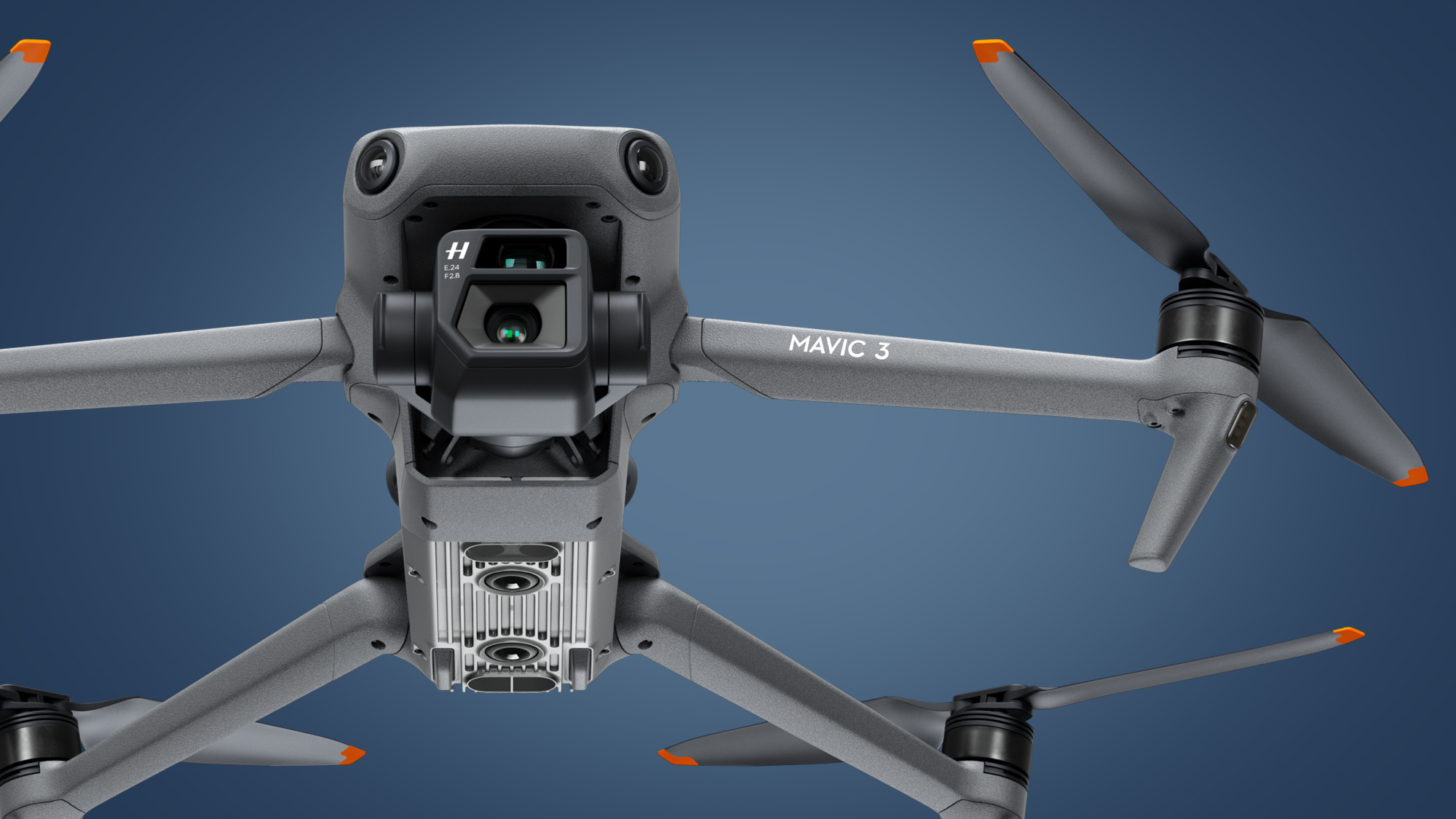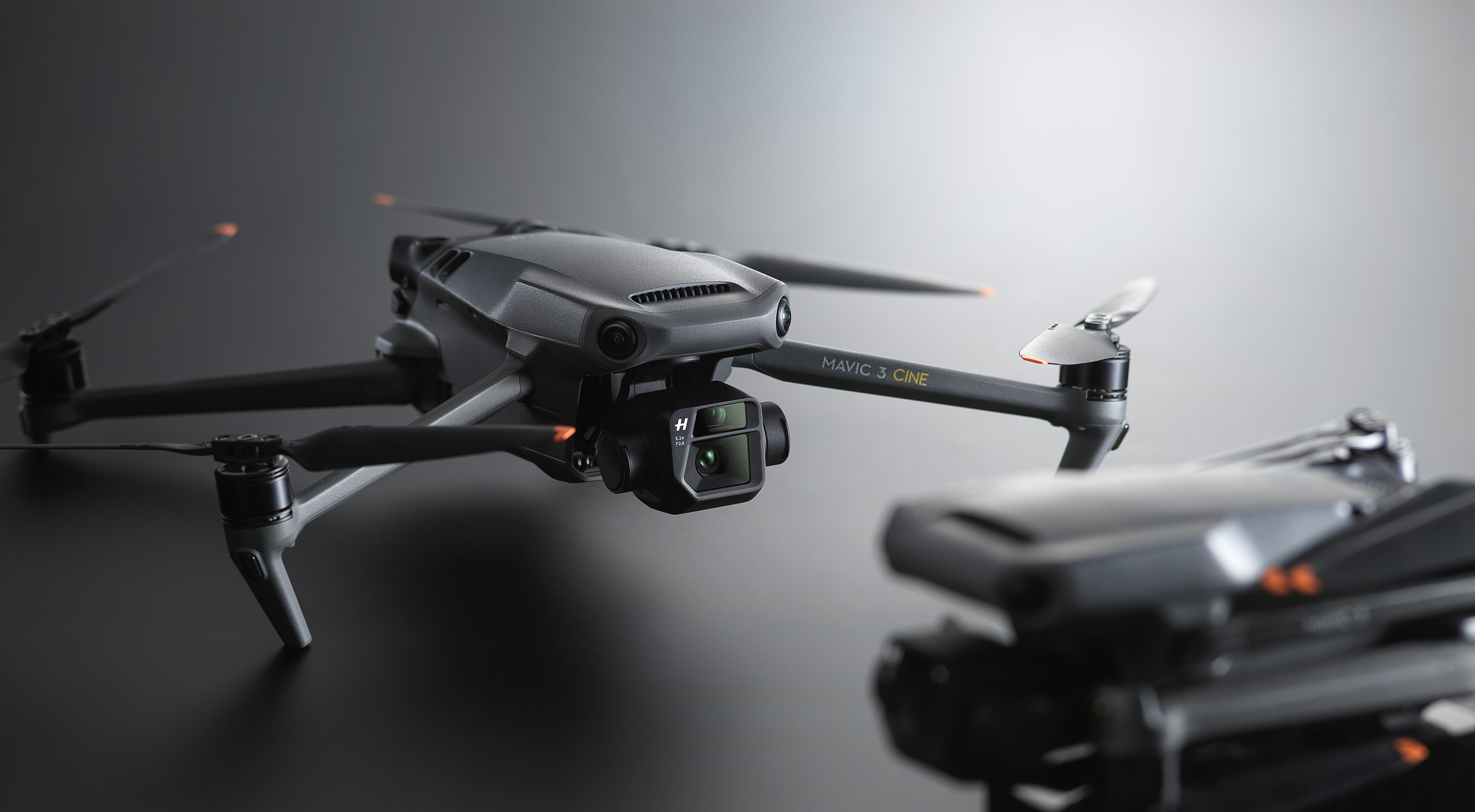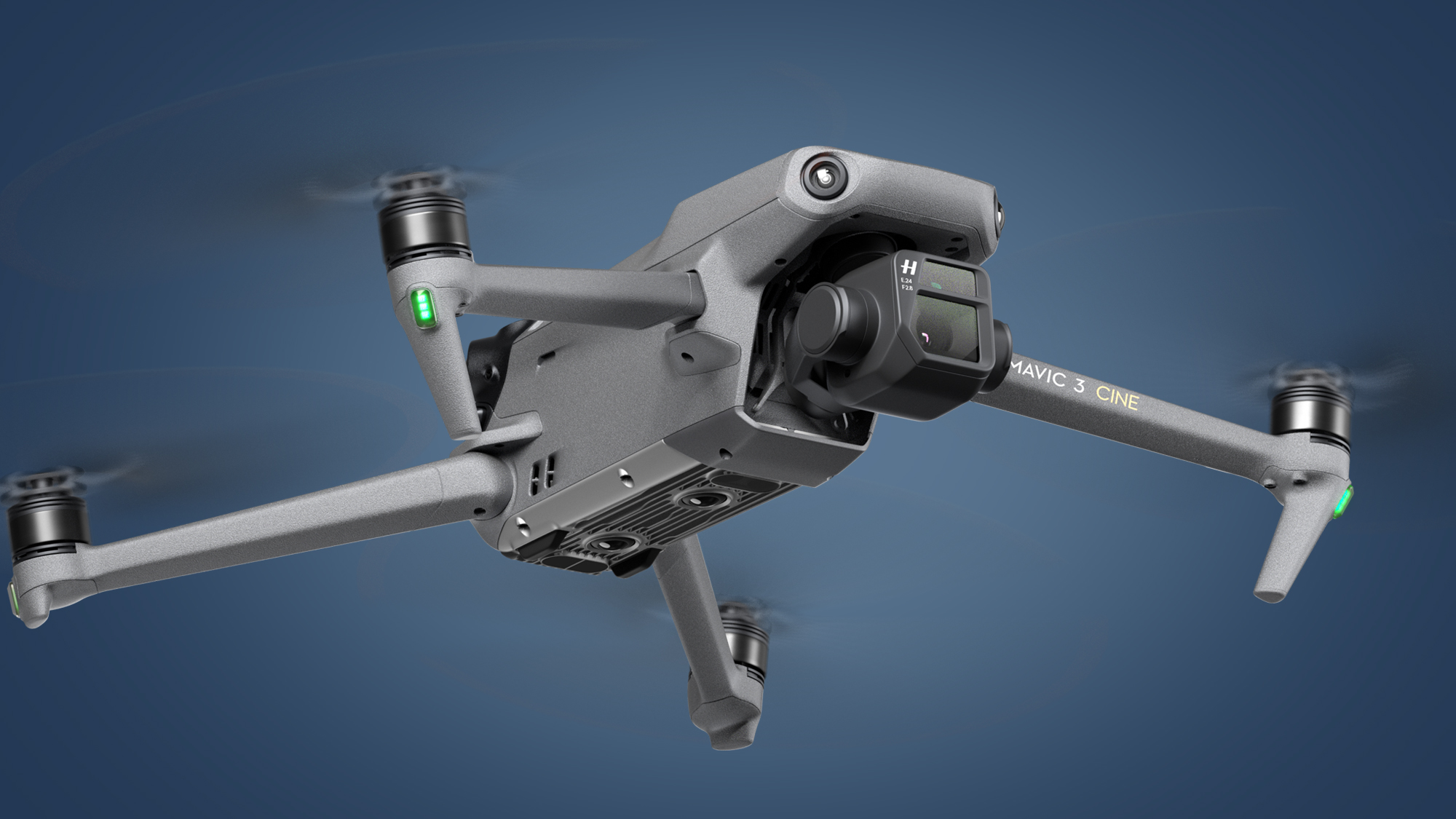DJI Mavic 3 is a class-leading drone with a price tag to match
Big sensor brings a big price tag

The DJI Mavic 3 has finally landed – and the flagship folding drone mostly lives up to the hype, according to our full review. (Want to jump to our verdict? Head straight to our in-depth DJI Mavic 3 review).
The Mavic 3 is a complete redesign of its DJI Mavic 2 Pro predecessor, which arrived back in August 2018. The headline news is its dual-camera system, which combines a 20MP Four Thirds sensor – the same size as the sensors inside mirrorless cameras like the Olympus OM-D E-M10 Mark IV – and a 12MP tele lens with a 162mm equivalent focal length.
The combination of these two cameras gives aerial filmmakers lots of flexibility, even if the telephoto lens comes with some limitations like a lack of manual or raw modes. But they're far from the only new features on DJI's new flagship consumer flying machine.
- These are the best drones you can buy right now
- Black Friday drone deals 2021: early sales and what to expect
- Read our in-depth DJI Mavic 3 review
Other improvements on the DJI Mavic 2 Pro include a redesigned battery that serves up 46 minutes of flight time, plus omnidirectional sensors, which are able to spot obstacles that are up to 200m away.
Sadly, ActiveTrack 5.0 autofocus tracking, which promises to allow the Mavic 3 to follow a subject in almost all directions, will only be arriving in a firmware update on January 22, 2022. This update will also deliver other features like MasterShots (a range of automated flight modes), which suggests the Mavic 3 isn't quite the finished article at launch.
Still, there's certainly enough power in that dual-camera system to keep drone fans happy in the meantime. The main Four Thirds camera lets you adjust its aperture between f/2.8 to f/11 – like on the Mavic 2 Pro, this lets you control the exposure while the drone's in the air and means you don't need strong ND (Neutral Density) filters in bright conditions.
The Mavic 3's main camera can also shoot 5K/50p video or 4K/120p slow-mo, neither of which were possible on the Mavic 2 Pro. It can also shoot video at a 200Mbps bit-rate (double the rate of its predecessor) and take 12-bit raw photos. The second camera is a bit more modest, with its 1/2-inch sensor and f/4.4 aperture, but digital zoom can take that 7x optical zoom up to 28x hybrid zoom for aerial close-ups.
Get daily insight, inspiration and deals in your inbox
Sign up for breaking news, reviews, opinion, top tech deals, and more.

Upgrade to the considerably pricier Mavic 3 Cine version, and you can also shoot video in Apple ProRes 422 HQ format for an incredible maximum data rate of 3,772Mbps. This naturally demands lots of storage, so the Mavic 3 Cine comes with a 1TB SSD, with the basic Mavic 3 offering a more standard 8GB internal storage.
One other big difference between the DJI Mavic 3 Cine model, and the standard version, is the controller. The basic Mavic 3 bundle includes the DJI RC-N1 controller that we've seen before on previous drones like the DJI Air 2S.
But the Mavic 3 Cine goes up a notch with the DJI RC Pro, a new version of DJI"s previous Smart Controller with a greater transmission distance of 15km and a bright, 1,000-nit screen. Its battery also promises to keep going for three hours.

Whichever controller you have, the Mavic 3 will talk to it via DJI's improved O3+ transmission system. This promises a more robust signal that can withstand interference and serves up a 1080/60p live feed, a first for a DJI drone. This means the feed you can see on your phone or RC Pro controller will look more like that video you're actually shooting.
Unfortunately, all of these pro-friendly features do take their toll on the Mavic 3's price tag. The DJI Mavic 3 standard version is available to buy today for $2,199 / £1,879 / AU$3,099, while the Mavic 3 Fly More Combo (which includes two extra batteries, a charging hub, a carrying case and a set of ND filters, among other accessories) comes in at $2,999 / £2,549 / AU$4,199).
If that price tag made you nervously adjust your glasses, wait till you see the one on the DJI Mavic 3 Cine Premium Combo – it's available for a mere $4,999 / £4,279 / AU$7,199. As impressive as the Mavic 3 Cine is, it'll likely be beyond the budgets of all but the most lucky amateur filmmakers.
Analysis: A flying mirrorless camera with a few rough edges

In the camera world, there's traditionally been a big price jump from 1-inch compacts to Micro Four Thirds cameras – and so it is with the DJI Mavic 3, which takes folding drones into flying mirrorless camera territory (albeit without the interchangeable lenses).
In some ways, the 39% price increase on the Mavic 2 Pro is a slight shame. One of the charms of that drone was that it brought pro-level features into a backpack-friendly form factor, but with a price ($1,599 / £1,349 / AU$2,499) that amateurs could just about justify.
That title has now been inherited by the DJI Air 2S, but there's a sizable jump from that drone (£899 / $999 / AU $1699) and the DJI Mavic 3, which starts at $2,199 / £1,879 / AU$3,099. Does this leave room for a model in between? Perhaps, but for now the DJI Air 2S will remain our pick as the best drone for most people.
This doesn't mean we won't be sorely tempted by the Mavic 3, though. It's a class-leading drone with an impressively versatile camera that squeezes in a stabilized Four Thirds camera – that's something we've only previously seen on much larger drones like DJI's Inspire series.
But for now, it's probably overkill for most amateurs, who'll be better off with the smaller DJI Air 2S or DJI Mini 2 – unless they genuinely want a drone to be their main camera.
One final consideration for European drone fliers is that the DJI Mavic 3 has launched during a transition period for EU drone laws – to find out what that means and what DJI has to say about that, check out our exclusive explainer on why the Mavic 3 could yet qualify for the forthcoming EU drone classes from 2023.
- Check out our guide to the best beginner drones

Mark is TechRadar's Senior news editor. Having worked in tech journalism for a ludicrous 17 years, Mark is now attempting to break the world record for the number of camera bags hoarded by one person. He was previously Cameras Editor at both TechRadar and Trusted Reviews, Acting editor on Stuff.tv, as well as Features editor and Reviews editor on Stuff magazine. As a freelancer, he's contributed to titles including The Sunday Times, FourFourTwo and Arena. And in a former life, he also won The Daily Telegraph's Young Sportswriter of the Year. But that was before he discovered the strange joys of getting up at 4am for a photo shoot in London's Square Mile.